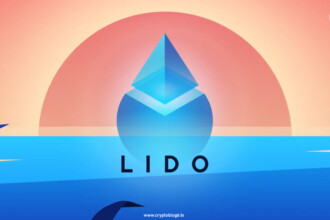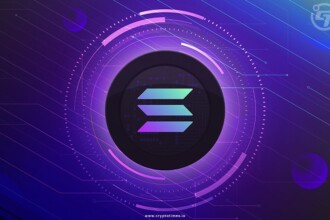In the past few years, “Blockchain” has become a buzzword among techies, developers, and digitally exposed businesses. It is often linked with Bitcoin and Cryptocurrency; sometimes, all three are used interchangeably, but blockchain differs from both. In fact, blockchain is the technology stack on which Bitcoin and other cryptocurrencies work.
Besides cryptocurrency, blockchain is used for numerous applications. A variety of solutions are already built on top of blockchain across different sectors, such as finance, healthcare, and supply chain. At its best, Blockchain technology can help the business industry in several ways.
Blockchain can be simply defined as a distributed database that allows the storage or transfer of data in a decentralized, immutable, and secure way.
Before diving into blockchain development, let’s first understand what blockchain is from a developer’s perspective.
What is Blockchain?
Blockchain is a digital ledger that stores data and is accessible through a peer–to–peer network. All the data on the blockchain is stored using transactions that are bundled in blocks. Technically, blockchain functions on the fundamental idea of distributed ledger technology (DLT) for recording and distributing data among the network participants called Nodes.
Blockchain technology can also be described as a digital database, but unlike being stored on the web or at any centralized server, it is distributed among nodes. These nodes hold a copy of the blockchain, and it is simultaneously updated whenever new data is uploaded to the blockchain. One of the most distinguishing characteristics of blockchain is the consistent updates as the block production continues until it is manually turned off.
Components of Blockchain
Blockchain is a combination of several key components that together form an ideal solution. It all creates a strong foundation on which blockchain functions.
These are the key components of blockchain;
- Peer-to-peer Network: Blockchain is fundamentally built on top of the peer-to-peer network mechanism. It connects several network participants to facilitate data transfers from one to another without relying on a centralized server.
- Cryptography: All the data stored on the blockchain is encrypted with the cryptography method. This ensures security and reliability while safeguarding blockchain data.
- Immutable Ledgers: Ledgers are the most significant element of a blockchain, which provides an immutable, irreversible, and sophisticatedly managed data source.
- Consensus: Consensus is the running vehicle for a blockchain. It is the process by which all nodes agree to verify and add transactions on the distributed ledgers.
Blockchain Development
Blockchain development is the process of designing and developing a customized blockchain project. This process involves building the blockchain from scratch. It may take months or even years to complete the development, depending on the complexity of the project. Let’s get into the blockchain development process and uncover its complexity;
5 Steps To Start Blockchain Development
Here are the 5 essential steps to craft design and start the development of a blockchain;
1. Identify Needs & Objectives
The first step towards getting started with blockchain development is identifying the need for it. This can be attained by asking why the new blockchain is developed and to what value it will serve. It may include the scope of service, the domain it aims to serve, and other factors that validate the idea.
If the blockchain is developed for general purposes, it’s important to note down all the novel functionalities it will offer that are distinct from others. There are hundreds of existing blockchains that provide maneuvering functions. So, before considering anything further, finding a niche or a specific serving area is needed. It will briefly explain what is being worked on and what could be achieved.
A prime example of a novel blockchain would be solving obstacles in business adoption or addressing scalability issues. This also includes whether the blockchain would be designed as a private or public network and even if it could combine both aspects, as many businesses prefer it to be hybrid.
2. Research
Conducting thorough research on blockchain project requirements is also an important step in the initial phase of development planning. The in-depth research helps to determine the demand and market placement of the blockchain.
This includes exploring the current market where similar blockchain applications are deployed, case studies of successful launches, and other available resources that could help in gathering vital information for starting blockchain development.
In the research, the following aspects are explored;
- Competitive Analysis: Exploring the existing blockchains that provide similar functionality to note the traction and performance.
- Scope: Based on the previously defined objectives, the scope of the blockchain project could be measured by researching and analyzing the need.
- Market Placement: Strategy for ‘when and how’ the newly moulded blockchain could be launched to get the most benefits out of it.
3. Outline Features & Functionalities
Once the requirements are stated and the research around it has been done, the next step is to outline the core features and functions it needs to have. The value proposition of blockchain lies in the functionalities it offers. This step is essential as it gives the final shape to the conceptual idea that the blockchain development process will follow.
Besides features, developers also need to opt for the consensus mechanism on which blockchain will work. Furthermore, it is also required to choose other technical aspects, such as programming language and if it will inherit core functionalities from other blockchains.
4. Preparing Proof of Concept
The Proof of Concept (PoC) is a finalized and working design of the blockchain for development. It includes structural implementation and practical applications of the proposed blockchain. Depending on its applicability, the blockchain project is rated as whether it is capable or not. As a blockchain developer, it is a must to know what is being developed, and Proof of Concept is much needed.
Moreover, the blockchain Proof of Concept gives a clear understanding of what is being developed, hence improving the efficiency of the development process. It is prepared by combining working demos, MVPs, traction, and more elements that define productivity. The blockchain Proof of Concept comes with a cost, but it is necessary for the pre-development phase.
5. Development
The final step is the actual development of the blockchain project. There are hundreds of tools and technology available to kickstart the development process. The existing solutions, such as APIs, web3-libraries, frameworks, etc., could be leveraged to improve the efficiency of developing the project.
When the development passes the final phase, the blockchain can be released under beta or alpha testing. Blockchains usually have a parallel running chain, which is called Testnet. It serves as an experimental hub for testing applications before launch on the primary blockchain.
After completing all these steps, the blockchain gets ready to be made available for use. Note that all these steps are denoted depending on the workflow, and it may not apply to all the development procedures.
Conclusion:
Blockchain development is quite a lengthy process and technically more advanced than normal web application development. It requires a developer to know specific programming languages like JavaScript, Python, C++, etc., and web development environments such as Node.js. Apart from the whole blockchain, there are also smart contracts, blockchain wallets, and other applications that follow a similar development process.
Blockchain technology holds greater potential to transform the way data is stored, processed, and verified. It also has applications in a variety of industries, which will eventually fuel the demand for blockchain development resources. Regardless of the existence of cryptocurrency, the scope of blockchain is expanding as numerous business applications are being developed and coming out for industrial use cases.
FAQs
Q1. How much time it takes to develop a blockchain?
Ans: The process of developing a Blockchain could take months or even years, depending on its features and functionality.
Q2. What is the process of blockchain development?
Ans: The blockchain development process involves phases such as an idea, research, defining features and functionality, pre-development planning, developing a demo (proof of concept), and beta testing.
Q3. Which languages are used for Blockchain development?
Ans: Blockchain can be developed using several languages, including JavaScript, Python, C++, Rust, PHP, and others.







